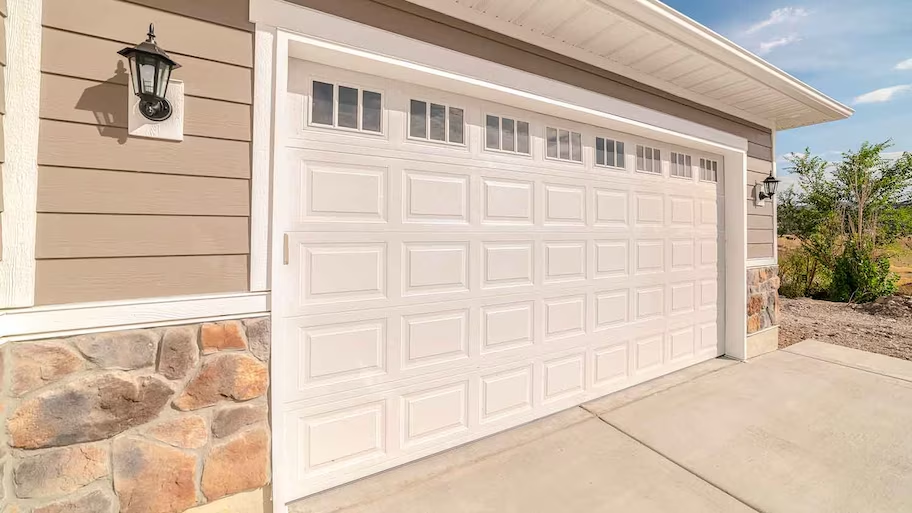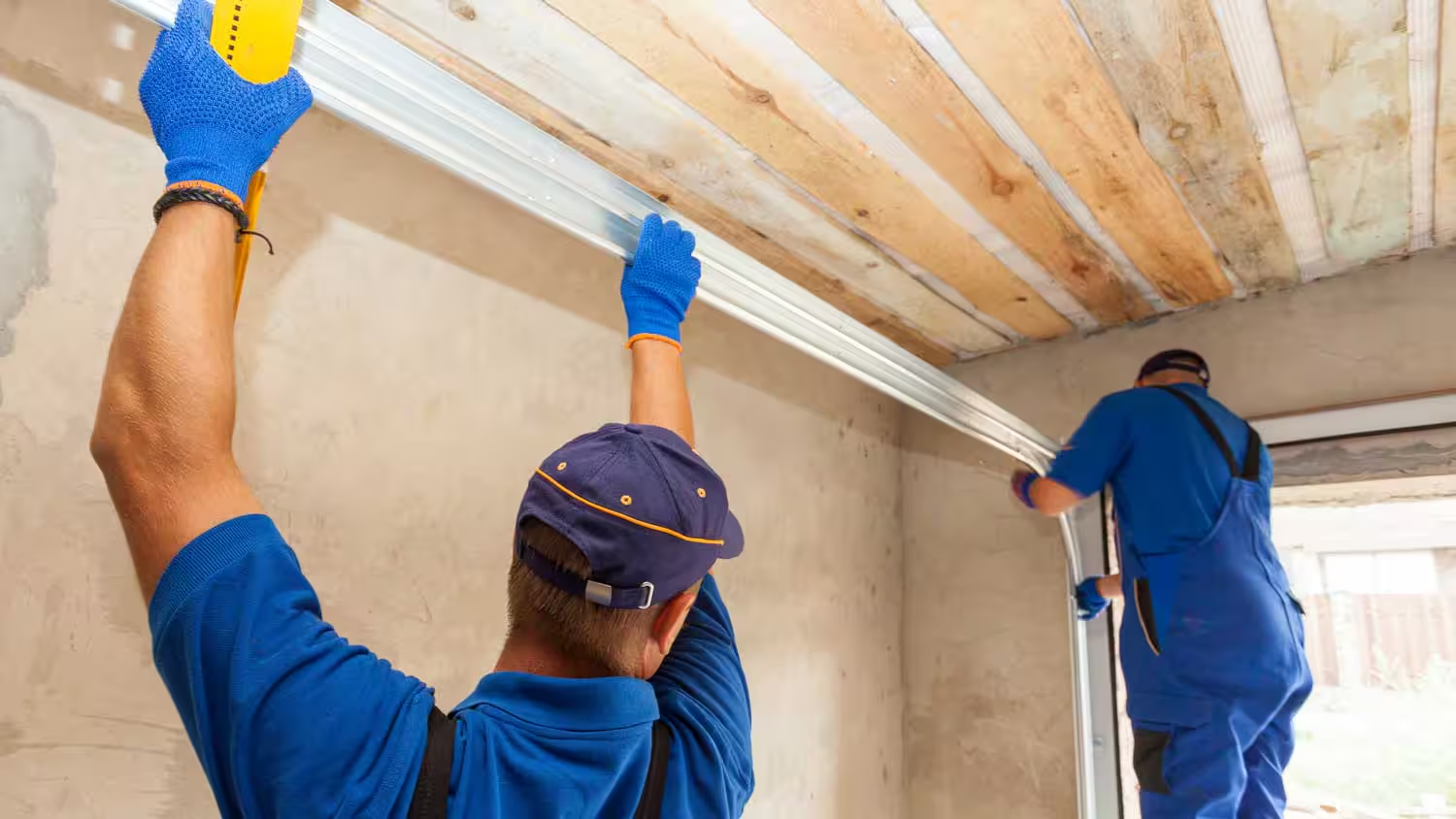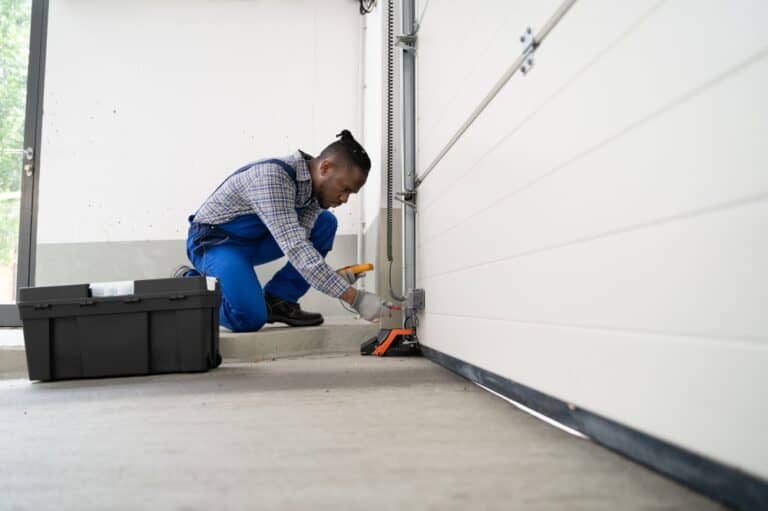When it comes to building or renovating a garage, framing the door might not be the most glamorous task, but it’s certainly one of the most critical. Proper framing ensures that your garage door fits snugly, operates smoothly, and stands the test of time. So, if you’re gearing up to tackle this essential aspect of garage construction, you’re in the right place.
Welcome to our comprehensive guide on how to frame a garage door. Throughout this walkthrough, we’ll break down each step of the process, providing clear instructions and insider tips to help you navigate this project like a pro. Whether you’re a seasoned DIY enthusiast or a first-time home improver, by the end of this guide, you’ll feel confident in your ability to frame a garage door with precision and skill.
So, let’s roll up our sleeves and dive into the world of garage door framing. From laying the groundwork to adding those final finishing touches, we’ve got you covered every step of the way. Get ready to transform your garage into a functional and stylish space that adds value to your home.

Understanding the Importance of Proper Framing
Before we delve into the intricacies of framing a garage door, let’s grasp why it’s vital for this task.
- Ensuring Structural Integrity: Your garage door isn’t merely functional—it significantly contributes to your home’s aesthetics and structural stability. Proper framing is the cornerstone of ensuring that your garage door operates smoothly, fits securely, and endures over time. Without it, you risk encountering a slew of issues, ranging from misalignment to structural weakness.
Materials and Tools for Framing
Now, let’s equip ourselves with the essentials needed to frame a garage door effectively.
- Lumber Selection: Opt for high-quality lumber that boasts strength and durability. Materials like pressure-treated wood or engineered lumber are ideal choices, as they resist rot and warping, guaranteeing the longevity of your garage door frame.
- Fasteners: Gather an array of nails, screws, and bolts to fasten the framing components securely. Ensure that the fasteners you select are suitable for the type of lumber you’re using and meet the specific requirements of your project.
- Leveling Tools: Achieving precise alignment is paramount in garage door framing. Utilize a quality level to guarantee that your frame is straight and plumb, preventing any operational issues with the door.
- Sawing Equipment: Whether you favor a circular saw, miter saw, or handsaw, ensure you have a reliable cutting tool to trim lumber to the appropriate size and shape for your frame.
- Hammer: A sturdy hammer is indispensable for securely driving nails and fasteners into place, a fundamental task in any framing project.
- Tape Measure: Accurate measurements are the backbone of successful framing. Employ a tape measure to mark out dimensions and verify that everything fits together seamlessly.
- Safety Gear: Finally, prioritize safety by donning gloves, safety glasses, and any other necessary protective gear to safeguard yourself while working with tools and materials.
Armed with these materials and tools, you’re poised to tackle the framing process with confidence. So, gear up, and let’s embark on framing your garage door!
Preparing the Opening for Your Garage Door
Measuring and Marking
Before you embark on framing your garage door, precision is key. Here’s how to get started:
- Measure Twice, Cut Once: Begin by meticulously measuring the width and height of your garage door. Take into account any additional space needed for tracks, hardware, and clearance. These measurements will serve as your blueprint for the framing process.
- Marking the Outline: Armed with your measurements, use a pencil and straightedge to mark the outline of the opening on both the wall and floor. Ensure your markings are accurate and aligned, as they’ll dictate the placement of your frame components.
Clearing and Leveling
With your measurements in place, it’s time to prepare the workspace for framing:
- Clear the Area: Remove any debris, clutter, or obstacles from the opening and surrounding space. A clean, unobstructed workspace is essential for a smooth and efficient framing process.
- Check for Levelness: Use a level to assess the surface where your garage door will be installed. Look for any dips, bumps, or unevenness that could impact the stability and operation of the door. If needed, use shims or a leveling compound to create a level foundation for your frame.
By meticulously measuring, marking, clearing, and leveling the opening for your garage door, you’re setting the stage for a successful framing project. With these essential steps completed, you’re ready to move on to framing the rough opening and bringing your garage door to life. So, let’s keep the momentum going and dive into the next phase!

Framing the Rough Opening: Building a Solid Foundation
Installing the Header and Jack Studs
Now that we’ve prepared the opening, it’s time to lay the groundwork for your garage door frame:
- Header Installation: Begin by installing the header, which provides crucial support for the weight of the garage door. Use sturdy lumber, such as pressure-treated wood or engineered lumber, and ensure it spans the width of the opening. Secure the header in place using appropriate fasteners, making sure it’s level and securely attached to the surrounding structure.
- Jack Stud Placement: Next, position the jack studs on either side of the opening to support the header. These vertical framing members will bear the weight of the header and distribute it evenly to the foundation below. Again, use high-quality lumber and secure the jack studs firmly in place with fasteners.
Adding Cripple Studs and King Studs for Support
With the header and jack studs in place, it’s time to reinforce the frame for added stability:
- Cripple Stud Installation: Install cripple studs between the header and the top plate of the wall framing to provide additional support and prevent bowing or sagging. Space the cripple studs evenly along the length of the header, ensuring they’re securely fastened and aligned with the rest of the frame.
- King Stud Placement: Finally, add king studs on either side of the jack studs to provide additional support and structural integrity to the frame. These vertical framing members will help distribute the weight of the door evenly and ensure its smooth operation. Like the other components of the frame, make sure the king studs are securely fastened and aligned for optimal performance.
Step C: Ensuring Proper Alignment and Spacing for the Door
With the main frame components in place, it’s crucial to double-check alignment and spacing before proceeding:
- Alignment Check: Use a level to ensure that the header, jack studs, cripple studs, and king studs are all perfectly vertical and aligned. Any deviations from the plumb could affect the operation of the garage door and compromise its structural integrity.
- Spacing Verification: Measure the distance between the header and the floor to confirm that it matches the height of your garage door. Additionally, verify the spacing between the jack studs and the header to ensure it accommodates the size of the door tracks and hardware. Making adjustments at this stage will help prevent issues during door installation.
By meticulously framing the rough opening and ensuring proper alignment and spacing, you’re laying the foundation for a sturdy and functional garage door frame. With this critical phase complete, you’re one step closer to transforming your garage into a secure and stylish space. So, let’s keep the momentum going and move on to installing the garage door tracks and hardware!
Installing the Garage Door Tracks and Hardware: Building for Functionality
Attaching the Vertical and Horizontal Tracks
With the frame in place, it’s time to focus on the mechanical components that will make your garage door operational:
- Vertical Track Installation: Begin by attaching the vertical tracks to the sides of the garage door opening. These tracks guide the movement of the door as it opens and closes. Secure the tracks to the frame using appropriate fasteners, ensuring they are plumb and aligned with each other.
- Horizontal Track Placement: Next, install the horizontal tracks along the ceiling of the garage. These tracks will connect to the vertical tracks and guide the movement of the door horizontally. Like the vertical tracks, ensure the horizontal tracks are securely fastened and aligned with each other and the vertical tracks for smooth operation.
Mounting the Brackets and Rollers
With the tracks in place, it’s time to install the hardware that will support and guide the door:
- Bracket Installation: Mount the brackets to the vertical tracks at appropriate intervals. These brackets will hold the rollers and provide a secure attachment point for the door sections. Make sure the brackets are securely fastened and aligned with the tracks to prevent any issues with door movement.
- Roller Attachment: Insert the rollers into the brackets, ensuring they are properly seated and able to move freely along the tracks. Depending on the type of door you’re installing, you may need different types of rollers, such as nylon or steel rollers. Choose rollers that are compatible with your door and provide smooth, reliable operation.
Installing the Torsion Spring System for Overhead Doors
For overhead garage doors, installing the torsion spring system is a critical step in ensuring safe and efficient operation:
- Torsion Spring Installation: Begin by installing the torsion spring assembly above the garage door opening. This system uses tightly wound springs to counterbalance the weight of the door, making it easier to open and close. Follow manufacturer instructions carefully to ensure proper installation and tensioning of the springs.
- Cable Attachment: Once the torsion spring assembly is in place, attach the lifting cables to the bottom brackets on each side of the door. These cables will connect to the springs and help raise and lower the door smoothly. Make sure the cables are securely fastened and properly aligned to prevent any issues with door operation.
By meticulously installing the garage door tracks and hardware, you’re setting the stage for smooth and reliable operation. With these critical components in place, your garage door is ready to take shape and become a functional part of your home. So, let’s keep the momentum going and move on to adding the finishing touches to your garage door frame!
Putting the Final Flourishes: Perfecting Your Garage Door Frame
Securing the Framing with Fasteners
With the structural components in place, it’s time to ensure everything is securely fastened for long-lasting durability:
- Check and Tighten: Take a moment to inspect the framing components and make sure all fasteners are tightened securely. Use a hammer or screwdriver to tighten any loose nails, screws, or bolts, ensuring everything is snug and stable.
- Additional Reinforcement: Consider adding additional fasteners or braces as needed to reinforce the frame, especially in areas that may experience high winds or other environmental stressors. Adding extra support now can prevent issues down the road and prolong the lifespan of your garage door frame.
Insulating and Weatherproofing the Door Frame
To enhance energy efficiency and protect against the elements, it’s essential to insulate and weatherproof your garage door frame:
- Insulation Installation: Install insulation between the framing members to improve thermal efficiency and regulate temperature inside the garage. Choose insulation rated for garage use and follow manufacturer instructions for proper installation to maximize effectiveness.
- Weatherstripping Application: Apply weatherstripping around the perimeter of the door frame to seal gaps and prevent drafts, moisture, and pests from entering the garage. Make sure the weatherstripping is properly aligned and securely attached to provide a tight seal.
Adding Trim and Seals for a Polished Look
To give your garage door frame a professional finish and enhance its appearance, consider adding trim and seals:
- Trim Installation: Install trim around the edges of the door frame to cover gaps and create a clean, finished look. Choose a trim that complements the style of your home and matches the aesthetic of your garage door for a cohesive overall appearance.
- Seal Application: Apply seals along the bottom of the door frame to prevent water, debris, and pests from infiltrating the garage. Choose seals designed specifically for garage doors and make sure they are properly aligned and securely attached to provide effective protection.
By securing the framing, insulating and weatherproofing the door frame, and adding trim and seals, you’re putting the final touches on your garage door project and ensuring it looks great and performs optimally for years to come. With these finishing touches complete, step back and admire your handiwork—you’ve transformed your garage into a functional and stylish space that adds value to your home. Congratulations on a job well done!

Frequently Asked Questions on How to Frame a Garage Door
Do I need any special skills to frame a garage door?
While basic carpentry skills certainly help, framing a garage door is within reach for most DIY enthusiasts with the right guidance. By following detailed instructions and paying attention to important details, you can successfully tackle this project and achieve professional-looking results.
Can I use any type of wood for framing?
It’s crucial to choose lumber that is both strong and durable to ensure the longevity and stability of your garage door frame. Opt for materials like pressure-treated wood or engineered lumber, which are specifically designed to withstand the elements and resist rotting, warping, and other forms of damage over time.
How long does it typically take to frame a garage door?
The timeframe for framing a garage door can vary depending on several factors, including your level of experience, the complexity of the project, and the type of door you’re installing. While some DIYers may complete the framing process in a single day, others may take a bit longer—typically, expect to invest a day or two to complete the project thoroughly.
Do I need to hire a professional to frame my garage door?
While hiring a professional is always an option, framing a garage door is a project that many DIY enthusiasts can tackle successfully. Not only does DIY framing save you money, but it also offers a sense of accomplishment and allows you to customize the project to your exact specifications. With the right guidance and attention to detail, you can achieve professional-quality results on your own.
Are there any safety precautions I should take when framing a garage door?
Absolutely. Safety should always be a top priority when working on any home improvement project. Wear appropriate safety gear, including gloves and safety glasses, to protect yourself from potential hazards. Additionally, familiarize yourself with the manufacturer’s instructions for all tools and equipment used in the framing process, and follow proper safety protocols at all times to minimize the risk of accidents or injuries.
By addressing these common questions and concerns, you’ll feel more confident and prepared to tackle the framing of your garage door. Remember, with the right knowledge and precautions in place, you can achieve professional-quality results while ensuring your safety throughout the process. So, roll up your sleeves, follow the steps outlined in this guide, and get ready to transform your garage into a functional and stylish space!
Conclusion
Framing a garage door may seem like a daunting task, but armed with the right knowledge and tools, it’s a manageable project that can yield impressive results. As we wrap up this guide, let’s recap what we’ve covered and leave you feeling empowered to tackle this project with confidence.
While it may require some effort and attention to detail, framing a garage door is well within reach for most DIY enthusiasts. With the guidance provided in this guide and the necessary tools at your disposal, you’re well-equipped to take on this project and achieve professional-quality results.
By meticulously following each step outlined in this guide, you’ll be able to create a frame that not only supports your garage door but also enhances its appearance and performance. From measuring and marking the opening to installing the tracks and hardware, every detail counts in ensuring a sturdy and reliable frame that stands the test of time.
With the knowledge gained from this guide, you’re well-prepared to embark on your garage door framing project and transform your space into a functional and stylish area that adds value to your home. Whether you’re a seasoned DIY enthusiast or a first-time home improver, we hope you feel inspired to roll up your sleeves and get started.
So, are you ready to transform your garage into a space you’ll love? With detailed instructions and expert tips at your fingertips, you have everything you need to bring your vision to life. So, grab your tools, follow the steps outlined in this guide, and get ready to make your garage the envy of the neighborhood!
With that, we wish you the best of luck on your framing journey. Happy building!



